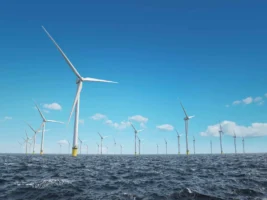One of the most comprehensive reports on the decline in solar PV prices has just been released by the US Department of Energy’s Lawrence Berkeley National Labs. Its Tracking the Sun report details the history of solar PV prices from 1998 to 2012, and one of its more interesting findings for Australian readers is the comparatively low-cost of rooftop solar PV in this country.
Here’s the key graph. Australia is the cheapest of most countries cited in the report – with the exception of Germany and on a par with Italy. The cost of installing solar PV on rooftops in France, Japan and the US is at least 50 per cent more expensive.
Part of the reason for this is what is known as “soft costs” – the cost of installation other than the cost of the modules themselves. This can include the cost of gaining approvals and finance, or the associated infrastructure.
The Berkeley report says the differences in soft costs may be partly attributable to differences in the cumulative size of each market, based on the theory that larger market size allows for price reductions through learning-by-doing and economies of scale.
This theory is partially borne out by data that shows that Germany and Italy had amassed roughly 32 GW and 16 GW of grid-connected PV capacity through 2012, far more than any other individual country.
But it noted the fact that Australia – a relatively small market in absolute terms (Australia had around 2.2GW to the end of 2012, and around 2.6GW now) – also had relatively low installed prices suggests that larger market size, alone, does not account for the entirety of installed price differences among countries.
(The study notes that its data may be a year or two out of date, and indeed, the latest assessment from Solar Choice suggests that the average installation cost in Australia is now around $1.70/W, with a high of $2.50 and a low of $1.40.
Notwithstanding the relatively high cost of solar PV in the US, the pace of price reduction continues, as Climate Progress reports:
The installed prices for solar photovoltaic (PV) power systems fell by a range of 6 to 14 percent, or $0.30 per watt to $0.90 per watt, from 2011 to 2012.
The report looked at a 208,529-unit sample of residential and commercial solar installations that “represents 72% of all cumulative grid-connected PV capacity installed in the United States through 2012.” The researchers looked at the median installed price of solar panels in three system size groupings. In 2012, this median installed price ranged from $5.3 per watt for small systems, down to $4.6 per watt for systems larger than 100 kilowatts:
Since 1998, installed system prices have been falling thanks to reductions in the costs of solar energy that do not include the panels themselves: inverters, mounting hardware, labor, permitting and fees, customer acquisition, overhead, taxes, and installer profit. Prices have been falling in the short-term because of the decline of the cost of solar panels, which fell by $2.6/W from 2008 through 2012. This represents an 80 percent price drop for PV systems generating less than 10 kW.
The steady drop in costs have helped to enable a steep increase in the pace of installation over the last several years. This graph shows the growth of total installed solar capacity since 1998 (along with the sample). Look at the jump from 2009 to 2012:
However, module prices are established based on supply and demand. “There simply are limits to how much further module prices can fall, and so it stands to reason that continued reductions in PV system prices will need to come primarily from the soft cost side,” co-author Ryan Wiser explained.
The soft costs, or non-hardware prices, can be influenced by local, state, and national policies. Countries like Italy, Australia, and Germany have generally incentivized solar adoption through long-term policies, which have in turn helped to reduce soft costs. In fact, residential PV systems installed last year in Italy, Australia, and Germany are nearly 40 percent lower than in the U.S. The report directly cites the pricing of soft costs for this glaring difference. These costs represent approximately half of the total installed cost of residential solar systems, so having the right policies in place at all levels of government remains the greatest opportunity for cost reductions, which Climate Progress discussed last month.
Even so, the U.S. achieved many significant accomplishments last year, installing a record 3,313 megawatts of PV in 2012. Additionally, the market size for the U.S. industry grew from $8.6 billion in 2011 to $11.5 billion in 2012, according to GTM Research. And in California, PV system prices have decreased by an additional 10 to 15 percent just within the first six months of 2013 — leading the report authors to suggest that PV price reductions in 2013 are on pace to match or exceed recent years. In order to continue the downward price trend over the long term, the U.S. solar market will have to focus on reducing soft costs.













